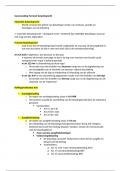Resumen
Summary Tort Law Key Revision Topics
- Grado
- Institución
This document contains very detailed revision notes for key tort law topics such as: - Duty of Care - Breach of Duty - Causation - Remoteness - Defences & Remedies - Occupiers Liability
[Mostrar más]












